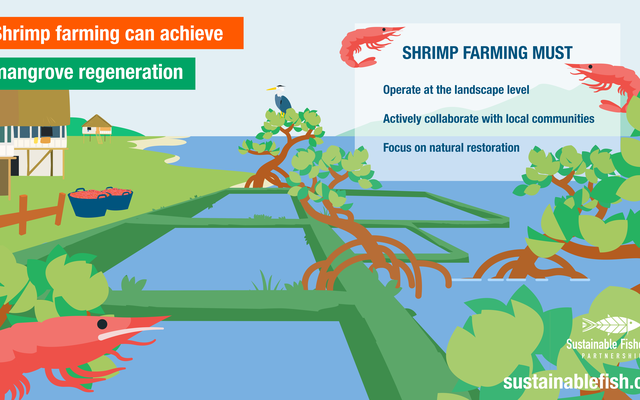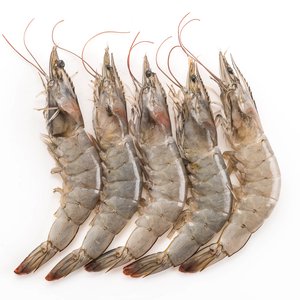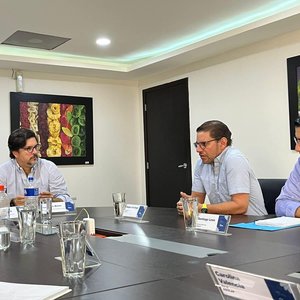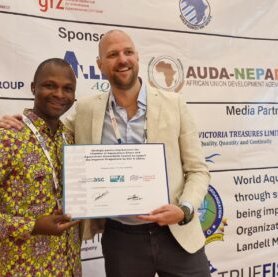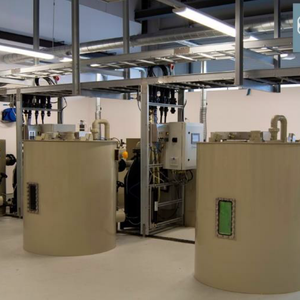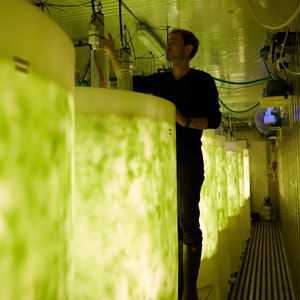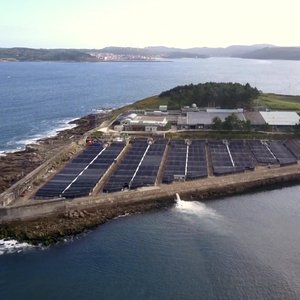A new study by Sustainable Fisheries Partnership (SFP) finds that shrimp farming can be a driver for mangrove protection and restoration, and in turn, help combat climate change and protect coastal communities and wildlife. The study provides a roadmap for the shrimp farming industry to restore mangrove habitats and return to the full range of ecosystem services they provide.
“The farmed shrimp industry can be leaders in the regeneration of critical and endangered mangrove habitat,” said William Davies, chair of SFP’s Farmed Shrimp Supply Chain Roundtable. “Acting now will allow businesses to meet their sustainability commitments, support countries to meet their climate goals, and increase the resilience of coastal communities.”
Mangroves provide a wealth of ecosystem services, including habitat for marine and migratory species, physically protecting coastal communities, intercepting pollutants, and capturing carbon. Mangroves sequester carbon at up to four times the rate of a terrestrial forest, making them vital to tackling climate change and lowering carbon emissions. It is estimated that mangroves protect 18 million people, and are worth $120 billion per year for their contribution to coastal defense, fisheries, forestry, and recreation.
“The farmed shrimp industry has a huge opportunity to bring back lost mangrove habitat. Shrimp farming can simultaneously improve its environmental reputation and tackle climate change by restoring abandoned ponds and by adopting shrimp farming practices that aim to operate in harmony with mangroves,” said Paul Bulcock, lead researcher and aquaculture information manager at SFP. “To be impactful, mangrove restoration efforts must operate at landscape-scale across whole areas.”
The study finds that shrimp buyers and supply chain companies can deliver on Environmental, Social, and Governance (ESG) commitments by driving restoration activities across whole landscapes and ecosystems to maximize impact and reduce fragmentation by linking patches of mangroves with each other. Certification schemes alone cannot meet this goal, because they focus on the farm level. However, by involving farmers, suppliers, and stakeholders within a defined area, multiple farms, including small-scale producers, will be able to meet and go beyond the habitat conservation and restoration criteria of major certification schemes.
SFP is developing a new map-based tool created in association with Longline Environment that identifies active and abandoned farming ponds within and adjacent to mangrove habitats in India, Vietnam, Indonesia, and Thailand. The tool allows companies that buy shrimp to identify opportunities within their supply chains to support restoration projects or aquaculture improvement projects.
The study also includes recommendations and actions for policymakers and resource managers, certification agencies and the GSSI benchmarking tool, researchers, and NGOs.


